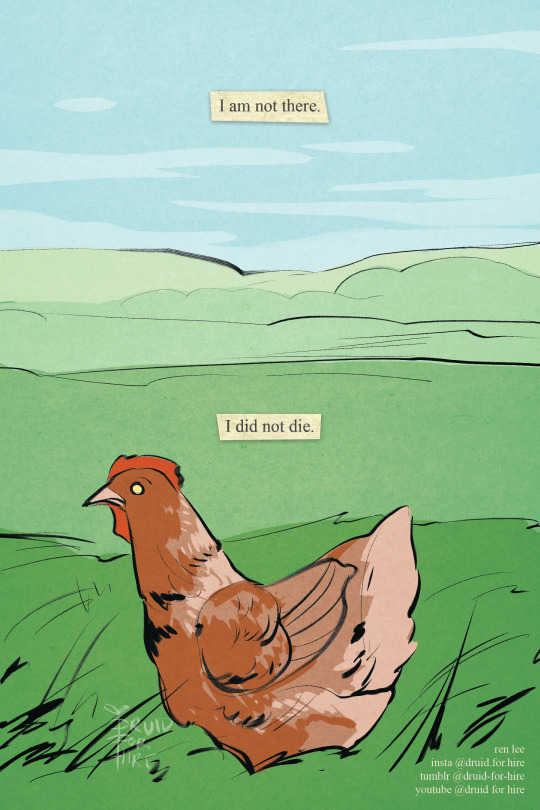#chicken tips
Explore tagged Tumblr posts
Text
How to Debone Every Chicken Cut with Confidence

Deboning chicken might sound like a job best left to professional chefs or experienced home cooks. After all, who has the time—or the skills—to turn a whole chicken or tricky cuts like thighs and wings into perfectly deboned pieces? But here’s the truth: deboning chicken at home is not nearly as complicated as it seems. With the right tools, a little guidance, and a dash of confidence, you can easily transform your store-bought chicken into ready-to-cook perfection.
Why bother? For one, deboning your own chicken saves money, as bone-in cuts are often cheaper than their boneless counterparts. Plus, there’s a freshness and satisfaction that comes with doing it yourself—not to mention the culinary possibilities that open up when you’re in control of every piece. Imagine turning leftover bones into rich chicken stock or customizing the size and shape of your cuts to match your favorite recipes.
This guide is here to show you that deboning chicken is an empowering skill and not intimidating at all. Let’s start with the essentials and work our way through each cut, proving that home deboning is a practical and rewarding skill every beginner cook can master.
To Get Started: Tools of the Trade
Having the right tools can make the process safer, faster, and more efficient. Here’s a breakdown of the essential tools, why the right knife matters, and a few optional extras to consider.
Essential Tools for Deboning Chicken
To successfully debone chicken at home, you’ll need a few must-have tools:
Boning Knife: Its sharp, thin, and flexible blade makes it ideal for cutting close to the bone, minimizing meat waste.
Cutting Board: A sturdy, non-slip surface ensures stability while working and keeps your knife from dulling.
Kitchen Shears: Useful for cutting through tough joints and trimming excess fat or skin.
Why the Right Knife Matters
A proper boning knife isn’t just a convenience—it’s the cornerstone of successful deboning. Its sharpness and flexibility allow precise cuts, reducing waste and making it easier to work around bones. A dull or bulky knife increases the risk of accidents and frustration, slowing you down and compromising your results.
Optional Tools for a Smoother Process
While not essential, these tools can elevate your deboning experience:
Bone Tweezers: Handy for removing small or hidden bones, especially in chicken thighs or fillets.
Meat Mallet: Helps flatten meat for even cooking after deboning.
Disposable Gloves: Keeps your hands clean and improves grip when handling raw chicken.
Paper Towels: Useful for patting the chicken dry, ensuring a secure grip and safer cuts.
Safety First: Setting the Stage for Success
When working with raw chicken, cleanliness and proper sanitation are non-negotiable. A clean workspace and sanitized tools not only ensure food safety but also make the deboning process smoother and more enjoyable. Contaminated surfaces or tools can lead to foodborne illnesses, so it’s essential to start with a clean slate and maintain it throughout your prep.
Quick Tips for Handling Raw Chicken Safely
Wash Hands Thoroughly: Always wash hands with soap before and after handling chicken.
Separate Raw Chicken: Keep chicken away from other ingredients to avoid cross-contamination.
Use a Dedicated Cutting Board: Choose one reserved for raw meat to prevent bacterial spread.
Sanitize Tools and Surfaces: Wash knives, boards, and counters with hot soapy water or a diluted bleach solution.
Keep Chicken Cold: Work quickly and refrigerate unused portions immediately.
How to Store Bones Properly
When to Store: If you plan to make stock or soup later, keep bones to add rich flavor to your broth.
How to Store: Place bones in an airtight container or freezer bag and freeze immediately. They’ll stay fresh for up to three months.
How to Dispose of Bones Properly
When to Dispose: If you don’t plan to use the bones, dispose of them promptly to avoid odor or contamination.
How to Dispose: Double-bag the bones in a sturdy trash bag to contain odors and bacteria. Dispose of them in an outdoor bin, especially in warm weather.
Breaking It Down: Deboning Chicken, Cut by Cut
This section is arranged to take you from the easiest cuts to the more advanced ones, helping you build confidence with each step. Starting with simple cuts like chicken breasts and moving to whole chickens ensures a gradual learning curve, making the process approachable for any beginner.
Chicken Breast: The Simple Start
Chicken breasts are an excellent choice for beginners because they’re boneless or semi-boneless cuts with minimal connective tissue to navigate. Their flat, even shape makes it easy to see and feel for any remaining bones or cartilage, allowing you to focus on developing your knife skills without frustration. Additionally, deboning a chicken breast often involves straightforward tasks like removing the breastbone or tenderloin, which are easy to identify and remove cleanly. This simplicity provides a low-pressure way to practice and gain confidence in handling poultry.
Step-by-Step Guide to Removing the Breastbone and Tenderloin
Position the Breast: Place the chicken breast side up on your cutting board. The thicker side should face you.
Locate the Breastbone: Feel for the ridge running along the middle of the breast.
Cut Along the Bone: Using a sharp boning knife, make a shallow cut along one side of the breastbone. Follow the curve of the bone as you slice.
Separate the Meat: Gently pull the meat away with your free hand as you continue slicing close to the bone.
Remove the Tenderloin: Flip the breast over and locate the small strip of meat on the underside. Use your knife or fingers to separate it from the breast.
Check for Small Bones: Feel the meat for any remaining cartilage or pin bones and remove them with tweezers or the knife.
Trim Excess Fat: Use kitchen shears to remove any visible fat or skin if desired.
Chicken Thighs: Discovering the Hidden Bone
Chicken thighs are a versatile and flavorful cut that’s well worth mastering. They’re slightly more challenging than chicken breasts due to their smaller size and single bone nestled within the meat. However, with a little practice, deboning chicken thighs becomes a quick and satisfying task, yielding a tender, juicy cut perfect for countless recipes.
Step-by-Step Guide to Locating and Removing the Thigh Bone
Position the Thigh: Lay the chicken thigh skin-side down on your cutting board. The bone should be visible or easily felt running through the center.
Score Along the Bone: Use a sharp boning knife to make a shallow cut along the length of the bone, exposing it fully.
Free the Edges: Carefully slice around the bone, separating it from the surrounding meat. Work slowly to avoid cutting through the meat.
Lift and Remove: Once the bone is mostly free, use your fingers or the knife to gently lift and detach it. Cut through any remaining connective tissue.
Check for Residual Cartilage: Feel for any small bits of cartilage or bone fragments and remove them.
Tips for Preserving the Most Meat
Stay Close to the Bone: Keep the knife angled toward the bone while cutting to avoid trimming away too much meat.
Small, Controlled Cuts: Use short, precise motions rather than long strokes to maintain control.
Save the Skin: If the recipe calls for skin-on thighs, avoid cutting into the skin—it helps keep the meat moist and flavorful during cooking.
Chicken Legs: From Drumstick to Deboned Delight
Deboning chicken drumsticks might seem unnecessary, but it’s incredibly useful in certain situations. Whether you’re stuffing them with your favorite fillings, creating tender boneless bites for stir-fries, or simply aiming for faster cooking times, mastering this skill expands the versatility of this popular cut. While the drumstick has more connective tissue than other cuts, it’s a manageable challenge that delivers rewarding results.
Step-by-Step Guide to Identifying and Separating the Drumstick and Thigh
Locate the Joint: Lay the chicken leg skin-side down. Feel for the joint where the drumstick meets the thigh—it’s slightly flexible.
Expose the Joint: Make a shallow cut through the skin and meat at the joint to expose the connecting tissue.
Cut Through the Joint: Use your knife to slice through the soft cartilage at the joint, separating the drumstick from the thigh cleanly.
Techniques for Removing the Long Bone Cleanly
Grip and Score: Hold the drumstick firmly and make shallow cuts around the top of the bone to loosen the meat.
Scrape Downward: Use the back of your knife to scrape the meat down the length of the bone, separating it from the connective tissue.
Twist and Pull: Once the meat is loosened, twist and pull the bone gently to remove it completely. If necessary, use your knife to detach any stubborn tissue.
Chicken Quarters: Two-in-One Skills
Chicken quarters are a versatile cut that includes both the thigh and drumstick, making them a great option for those who want the rich flavor of dark meat with the convenience of having both pieces in one. These cuts are larger and meatier, often chosen for grilling, roasting, or creating impressive stuffed dishes. Deboning a chicken quarter can make cooking more efficient and expand your recipe options, such as rolling and stuffing the meat for elegant presentations or simplifying the cooking process for quick meals. It’s especially worth deboning chicken quarters when you want uniform cooking or need boneless portions for a specific dish.
How to Debone a Chicken Quarter Without Losing Meat
Start Skin-Side Down: Lay the quarter skin-side down on your cutting board to expose the bones and make them easier to work with.
Locate the Joint: Feel for the joint where the thigh and drumstick connect. Make a shallow cut to expose the cartilage, separating the two pieces slightly for easier handling.
Score Along the Thigh Bone: Run your knife along the length of the thigh bone, making shallow cuts to expose it. Angle your knife toward the bone to avoid cutting away too much meat.
Free the Thigh Bone: Use the tip of your knife to slice around the edges of the thigh bone, loosening it. Lift and pull the bone out gently once it’s fully detached.
Remove the Drumstick Bone: Repeat the process for the drumstick bone by scoring around its length and scraping downward to loosen the meat. Twist and pull gently to remove the bone.
Trim and Check: Remove any remaining cartilage or small bone fragments, and trim excess fat if desired.
Chicken Wings: The Mini-Challenge
Chicken wings are often served bone-in, but deboning them opens up a world of culinary possibilities. Whether you’re making stuffed appetizers, crispy boneless wings, or preparing them for soups and stews, deboning chicken wings allows for easier eating and creative presentations. Boneless wings are also a hit at parties, offering all the flavor of traditional wings without the mess. With a little patience, deboning wings can transform this popular cut into a versatile ingredient for countless dishes.
Step-by-Step Guide to Splitting and Deboning Chicken Wings
Separate the Sections: Locate the joints that connect the drumette, wingette, and wingtip. Use a sharp knife or kitchen shears to cut through the cartilage at each joint. Discard the wingtip or save it for stock.
Position the Wingette: Lay the wingette flat on your cutting board, skin-side down.
Locate the Bones: Feel for the two thin bones running through the wingette.
Make a Cut: Use the tip of your knife to make a small incision along one bone, exposing it slightly.
Remove the First Bone: Slide the knife under the bone and cut away any attached cartilage. Gently twist and pull the bone out.
Repeat for the Second Bone: Follow the same process to remove the second bone, leaving the meat intact.
Debone the Drumette: Stand the drumette upright and score around the top of the bone. Scrape downward with your knife to separate the meat, then twist and remove the bone.
Using Shears for Precision
Kitchen shears are an excellent tool for handling chicken wings, especially when precision is key. They make cutting through joints and cartilage quick and clean, reducing the risk of uneven sections or jagged cuts. Use shears to split the wing sections or trim away excess fat and skin before deboning. Their compact size and ease of use give you better control in tight spaces, ensuring a neat and efficient process every time.
Whole Chicken: The Ultimate DIY Project
Deboning a whole chicken is a cost-effective way to make the most of your purchase. It allows you to separate the meat into versatile cuts while saving the bones for flavorful stocks or broths. This technique also gives you control over the portion sizes and ensures no part of the chicken goes to waste. Whether you’re preparing multiple meals or creating an elegant stuffed roast, deboning a whole chicken unlocks endless cooking possibilities.
Step-by-Step Instructions: From Backbone to Boneless Perfection
Prepare the Chicken: Place the chicken breast-side down on a sturdy cutting board. Ensure you have a sharp boning knife or kitchen shears ready.
Separate the Backbone: Locate the backbone running down the center of the chicken. Use kitchen shears to cut along both sides of the backbone. Remove it and set it aside for stock if desired.
Flatten the Chicken: Flip the chicken over and press firmly on the breastbone to flatten it (spatchcock). This step makes the remaining bones easier to access.
Remove the Breastbone: Locate the white cartilage or ridge along the center of the chicken. Make a small cut at the top and pull it out gently, working your way downward.
Detach the Wings: Slice through the joint where the wings meet the body. Either leave the wings attached if desired or debone them using the earlier method.
Separate the Thighs and Drumsticks: Flip the chicken back over. Cut through the joint connecting each leg to the body. Debone the thighs and drumsticks individually by following the techniques mentioned earlier.
Remove the Rib Bones: Run your knife along the inside edges of the ribcage, separating the meat from the bones. Work carefully to preserve as much meat as possible.
Trim and Check: Inspect the meat for any small bones or cartilage and remove them. Trim any excess fat as needed.
Your First Step to Deboning Mastery
Deboning chicken at home isn’t just a handy skill—it’s a way to save money, reduce waste, and elevate your cooking. From simple cuts like breasts to tackling whole chickens, you now have the tools and techniques to handle it all.
Don’t be afraid to practice! This guide is written with beginners in mind, so take it one cut at a time, and you’ll soon master the art of deboning. Each attempt brings you closer to culinary confidence. Next time you buy chicken, use this guide to transform your purchase into perfectly prepared cuts. Happy deboning!
0 notes
Photo




[image id: a four-page comic. it is titled "immortality” after the poem by clare harner (more popularly known as “do not stand at my grave and weep”). the first page shows paleontologists digging up fossils at a dig. it reads, “do not stand at my grave and weep. i am not there. i do not sleep.” page two features several prehistoric creatures living in the wild. not featured but notable, each have modern descendants: horses, cetaceans, horsetail plants, and crocodilians. it reads, “i am a thousand winds that blow. i am the diamond glints on snow. i am the sunlight on ripened grain. i am the gentle autumn rain.” the third page shows archaeopteryx in the treetops and the skies, then a modern museum-goer reading the placard on a fossil display. it reads, “when you awaken in the morning’s hush, i am the swift uplifting rush, of quiet birds in circled flight. i am the soft stars that shine at night. do not stand at my grave and cry.” the fourth page shows a chicken in a field. it reads, “i am not there. i did not die” / end id]
a comic i made in about 15 hours for my school’s comic anthology. the theme was “evolution”
#dinosaur#evolution#comic#prehistoric#animal#wildlife#paleontology#biology#poetry#comics#original#my art#archaeopteryx has no direct living descendants i know#but i wanted something aerial and the dinosaur to bird connection is classic and well known anyway#also the chicken over any other bird is very on purpose#its the mix of truth and comedy and genuineness and the fantastic in the mundane#its me asking you to see something so wonderful in something taken so un-seriously#and to love it both ways#also the jurassic park thing#where someone saw the reconstructed gait of a dino#and said. hey hang on. i know that walk.#and pulled up footage of a chicken walking#which jumpstarted the entire study into the link between dinosaurs and birds#in the end take whatever you want from it i just thought id provide some insight#i always like it when other artists do#the point is that i enjoy when people laugh at the end and when they dont#and i like it when they cry. i like it best when they both laugh and cry. eeaao intent#anyway mourn your losses but to live is to change#also hi guys i finally figured out tipping after 5 months so no more annoying ko-fi link#the antidote to despair is awe
151K notes
·
View notes
Text
I have a hen that is the sweetest thing ever. Named Hennifer. Loves to cuddle people. Makes any babies she takes care of calm with people. However, she has a habit of dumping the young before they are ready. So I have to take care of her child. Luckily its already taught to be calm around people by Hennifer. Baby wants mom, but seems to understand hanging out with me is better than nothing til we find her. She will still tolerate the baby hanging out with her but won't make an effort to stay with it. A couple times its started following a black hen(same color as mom) before the hen turns around and freaks out the baby sending it running back to me.
To help pick up a friendly chicken that still gets spooked sometimes, squat down so you don't look so big and scary. Then you scoop it up from underneath so it doesn't feel like a predator is grabbing it from above. When I pick up this baby I just squat down and put my hands out and it walks right over and I scoop it up so I can put it to bed.
#Chicken#Chickens#i love chickens#pet chickens#bird#Birds#chicken baby#Chicken tips#hen fren#farm bird#farm animal
1 note
·
View note
Text

#What to do in the Event You Encounter the Shadow Chicken#tips#tricks#life hacks#helpful hints#advice#unreality#The Shadow Chicken#chicken#TW blood
251 notes
·
View notes
Text


okay, i think im ready to go now. ✨
Treat me ~ Tip me ~ More of me
#i need to go asap before i chicken out and dont bother 😂 cant waste this look!!#buy me a drink?? (Tip Me 🥺✨)#satans knitwear#alt pinup#pinup girl#pretty lingerie#lingerie reveal#seamed stockings#stockings and suspenders#ootd#bi girl#cheeky#uk girl#wlw
2K notes
·
View notes
Text




look at all of these beans
#look at all those chickens playing in my head#the rbg clown has other colors theres a full pack of em so put the gradient one here#also side note thank u so much to these commissioners for giving me tips i cri#commission work#commission art#art#artwork#not my character#fantrolls#fantroll#homestuck#hiveswap
614 notes
·
View notes
Text







On a trip to Batuu
Felt like finally drawing a variation of "Jedi Survivor Goes to Disneyland," but as "Cal, Merrin and BD-1 go on a trip to Batuu." I have been waiting to do another one of these "fandom goes to Disneyland" drawing things, and I finally got the chance to take some pics in Galaxy's Edge the other day during a recent Disneyland trip.
#fanart#jedi survivor#star wars jedi survivor#cal kestis#cal#merrin#nightsister merrin#bd-1#merrical#cal x merrin#disneyland#batuu#galaxy's edge#disneyland posting#Merrin is drinking the Moof Juice while Cal got the Cold Brew Black Caf#i ended up eating at Docking Bay 7 like three times in the same day and sat in that exact place each time haha#i'm a sucker for the Tip Yip chicken and mac n cheese....#star wars#swjs#star wars galaxy's edge
1K notes
·
View notes
Text

Experimenting with new techniques……
#I like how the leaves came out#not so much the shading#I’m not a professional artist tho#any procreate tips are welcomed#chickens#chickenblr#chicken doodles#chicken art#chicken#art#digital art#christmas wreath
90 notes
·
View notes
Text


POV: before you sit two hungry ravenous spirits of floof. which one will you pick to give a treat to? choose wisely. 🧙
72 notes
·
View notes
Text

How to bake frozen chicken breast
#chicken#chicken breasts#baked chicken#meat#food#dinner#meal#main dishes#healthy recipes#chicken recipe#easy recipes#cooking tips#yum#tasty#foodporn#delicious#cooking#food photography#foodgasm#recipe
300 notes
·
View notes
Text

Vegan "Honey" Garlic Tofu
#chinese#dinner#savoury#takeout#takeaway#tofu#bok choy#honey#vegan honey#garlic#honey chicken#honey tofu#rice#food#recipe#recipes#vegan#veganism#healthy food#healthy eating#clean eating#lose weight#weight loss tips#health and wellness#health & fitness#yoga#rice bowl#nut free#gluten free#glutenfree
71 notes
·
View notes
Text
The Ultimate Guide to Freezing Fresh Chicken Without Losing Flavor!

Proper freezing techniques play a critical role in preserving both the flavor and texture of fresh chicken. The process may seem simple, but improper techniques can rob your meat of its juicy flavor and tender texture. Without the right approach, you risk freezer burn, leaving your chicken dry, tough, and far less appetizing when it’s time to cook. Our guide will help you navigate through the best practices for freezing your fresh chicken like a pro.
Choosing Fresh Chicken
Ensuring the chicken is fresh before freezing is key to preserving flavor. Fresh chicken has higher moisture content and intact muscle fibers, which freeze better than chicken that has started to lose quality. Freezing chicken while it’s fresh locks in the natural juices and prevents the growth of bacteria that could spoil the flavor. The fresher the chicken, the better the flavor and texture will be when thawed for cooking.
Choosing the right cuts of chicken for freezing can significantly impact the quality of the meat once thawed. Here's the rundown of cuts and the process:
Chicken Breasts: These are lean cuts, so they freeze quickly and maintain a firm texture. However, because they are low in fat, they can dry out easily if not packaged properly. Vacuum sealing or using airtight bags is essential to lock in moisture and prevent freezer burn.
Chicken Thighs and Drumsticks: These cuts contain more fat and connective tissue, which makes them more resilient during the freezing process. The extra fat helps preserve moisture and flavor, so they remain juicy and tender even after being frozen and thawed.
Whole Chicken: Freezing a whole chicken takes longer due to its size, so proper packaging is critical to avoid air pockets, which can lead to freezer burn. A whole chicken retains flavor well because all the parts are sealed together, but it’s important to freeze it quickly to maintain quality.
Chicken Wings: These smaller cuts freeze quickly, making them less prone to freezer burn. However, they have a higher skin-to-meat ratio, so properly sealing them is crucial to avoid ice crystal formation, which can affect both texture and flavor.
Packaging Methods: A Comparison
1. Vacuum Sealing
Air Removal: Vacuum sealing removes nearly all air from the packaging, which prevents oxygen exposure. This is crucial for preventing freezer burn and slowing the oxidation process, which helps maintain the chicken’s moisture and flavor over time.
Longer Shelf Life: Because there’s no air to cause freezer burn or bacterial growth, chicken stored in vacuum-sealed bags lasts longer in the freezer (up to 1-2 years) without losing quality.
Superior Protection: The tight seal provided by vacuum sealing means the chicken is better protected from moisture loss and ice crystal formation, which ensures that the texture remains firm and flavorful after thawing.
2. Airtight Freezer Bags
Air Reduction (But Not Elimination): While freezer bags can be airtight if sealed properly, they don’t remove as much air as vacuum sealing does. Some air typically remains in the bag, which can lead to a higher chance of freezer burn over time.
Shorter Shelf Life: Chicken stored in airtight bags typically lasts around 6-9 months in the freezer before you start seeing signs of quality degradation, such as flavor loss or texture changes due to freezer burn.
More Affordable and Convenient: Freezer bags are often cheaper and easier to use since they don’t require special equipment like a vacuum sealer. However, they may require extra care to ensure the chicken is tightly wrapped and air is minimized.
Which is Better?
For freezing fresh chicken, vacuum sealing is the better method because it offers superior air removal and protection, preserving the flavor and texture of the chicken for a longer period. Airtight bags are a good alternative if vacuum sealing isn’t available, but they require more attention to ensure proper sealing and offer a shorter freezer life for the chicken.
Labeling and Organizing the Chicken
Properly labeling chicken packages with dates and contents is essential for maintaining freezer organization and ensuring the quality of your chicken over time. By clearly marking each package with the date it was frozen and the specific cut of chicken inside, you can easily track how long it has been in the freezer and use the older packages first, preventing any from staying frozen too long and losing flavor. Knowing the exact cut inside also saves you time during meal prep, as you can grab the right package without needing to open and inspect multiple bags. Grouping the chicken cuts—such as breasts, thighs, or wings—together in the freezer further enhances organization, allowing you to quickly locate the cuts you need based on your recipes. This method ensures optimal freezer space usage and prevents food waste, as you can manage your inventory efficiently and avoid losing track of packages.
Optimal Freezing Temperature
The optimal freezing temperature for chicken is -18°C (0°F) or lower. This temperature halts the growth of bacteria and slows down the process of spoilage, effectively preserving the chicken's freshness, texture, and flavor for an extended period.
Maintaining this temperature is crucial because it ensures that the water content within the chicken freezes quickly, minimizing the formation of large ice crystals. If the temperature fluctuates or is set too high, the ice crystals that form can puncture the muscle fibers, resulting in a mushy texture once thawed. Quick and consistent freezing at the optimal temperature keeps the structure of the chicken intact, so when it’s thawed, the meat retains its natural firmness and juiciness. By freezing chicken at or below -18°C and maintaining a stable freezer environment, you ensure the chicken remains as close to fresh as possible, with the flavors and texture well-preserved even after months of storage.
Thawing Chicken the Right Way
Here are the safe and effective methods on how to defrost chicken:
1. Refrigerator Thawing (Best for Flavor)
Place the chicken in the fridge at a temperature below 4°C (40°F).
This slow and steady method preserves the chicken’s flavor and texture by keeping it at a safe, constant temperature.
It takes about 24 hours for a full chicken or large cuts, and smaller cuts like breasts may thaw overnight.
Once thawed, the chicken can stay in the fridge for an additional 1-2 days before cooking.
2. Cold Water Thawing (Quick Method)
Submerge the chicken (in a sealed plastic bag) in a bowl of cold water.
Change the water every 30 minutes to keep it cold.
This method is faster than refrigerator thawing, taking 1-3 hours depending on the size of the chicken, but still protects the flavor.
Cook the chicken immediately after thawing to avoid bacterial growth.
Both methods are safe and preserve the chicken's quality, but avoid thawing at room temperature, which can promote bacterial growth and compromise flavor.
Common Freezing Mistakes to Avoid
Here’s a list of common freezing storage errors and how they impact the quality of fresh chicken, along with practical tips to avoid them:
1. Refreezing Thawed Chicken
Why it’s bad: When chicken is thawed and refrozen, the cell structure breaks down, leading to moisture loss. This results in a dry, rubbery texture when cooked, and the flavor diminishes as well. Additionally, refreezing increases the risk of bacterial growth if the chicken wasn't thawed safely.
Tip to avoid: Thaw only the amount of chicken you plan to use. If you’ve accidentally thawed more than needed, cook the extra portions and freeze the cooked chicken for later meals.
2. Freezing with Air Pockets
Why it’s bad: When chicken is not properly sealed, air remains in the packaging, leading to freezer burn. Freezer burn causes the chicken to lose moisture, making it dry and tough with a bland, off flavor. The chicken's surface becomes covered in frost, which alters its texture.
Tip to avoid: Use vacuum sealing for the best results, or press out as much air as possible from freezer-safe bags before sealing. If vacuum sealing isn’t available, double-wrap the chicken in plastic wrap before placing it in the freezer bag for extra protection.
3. Not Freezing Promptly After Purchase
Why it’s bad: Fresh chicken left in the fridge for too long before freezing begins to degrade in quality. As bacteria multiply, the chicken can develop off-flavors and a slimy texture, which freezing won’t reverse. The longer you wait, the greater the risk of spoilage and flavor loss.
Tip to avoid: Freeze chicken within 1-2 days of purchase, especially if you don’t plan to cook it immediately. Always prioritize freezing it while it’s fresh to lock in the best flavor and texture.
Following these tips ensures your chicken remains flavorful, juicy, and safe for cooking even after extended storage in the freezer.
By following these essential steps—from selecting the freshest chicken and prepping it properly to using the best packaging and thawing methods—you can ensure your chicken stays flavorful, tender, and ready for any meal. Freezing doesn’t have to mean sacrificing quality, and with the right techniques, your chicken will taste just as good as the day you bought it. Try these tips in your kitchen, and feel free to share your own experiences about freezing chicken below!
0 notes
Note
your asks astonish me, but i realized theres only.. like.. 5 types of asks u get. so basically this is what i think ur ask box looks like rn:
anon1: haiii shane! luv u!
anon2: shane i hate you you look like you never shower you stink so much you filthy rat
anon3: shane ur so ugly i love you. ur such a cutie patootie. ur so pathetic. ur like the physicla embodiment of a wet paper bag. i luv u.
anon4: hi u have a nice ass :3
anon5: shane help my toilet exploded
basically what im tryin to say is that you dont get paid enough for this
i actually laughed out loud reading this.

you think i get paid for this? i wish i were… i’m not. i actually think my paycheck gets deducted whenever i log into this blog.
#ask-shane 🐓#this is so fucking funny to me#to add on#anon 6: i will give you all my pepper poppers. BARK#anon 7: please please please please please please please( ???)#anon 8: look at my pet! [insert picture]#anon 9: how do you feel about steam powered locomotives#anon 10: POOOOOOKIE C’MERE!!! pspsps#anon 11: i am fuckinf anguished. tips on how to get through this or am i doomed to this fate forever#anon 12: you are gay#anon 13: dilf 🤤#anon 14: i ate your chicken shane#anon 15: what are your thoughts on the orb
75 notes
·
View notes
Text
if i had a dollar for every time i knew a character who's:
1. nonbinary
2. with white hair
3. in a dating sim




i'd have 4 dollars. which is quite a bit, and something tells me there's more i just don't know about.
#my bird destroyed my apple pencil tip#so i cant finish my sketches#until the replacement arrives#im turning her into chicken nuggets#not rlly tho i love her#but she also drives me crazy#touchstarved game#touchstarved mhin#keyframes vn#asra the arcana#the arcana#life after magic
203 notes
·
View notes
Text

#Here’s Some Free Advice From the Chickens#advice#life hacks#helpful hints#tips#tricks#chicken#chickens#snake#snakes#TW snake
98 notes
·
View notes
Text
A kunisig hug, becouse they are my precious, fluffy comfort babies, and they deserve happiness. ☺️


+ sketch

Should I be drawing costume designs for my diploma? Absolutely. But I'm kinda fed up with the whole thing, I've been literally working on that thing day and night for the past months, and I'm very sleep deprived and the work just doesn't wanna end, and I missed drawing fanart so bad!!! So I did. And it was worth it, couse now I feel better. 😊
#bsd#bungo stray dogs#bsd fanart#bsd sigma#bsd kunikida#kunikida doppo#kunisig#I spent so much time trying to draw Sigma's heels from this angle that by the end I almost forgave Bones for chickening out about it#almost#like the thing has hight heels but also a sole and there is a hole there also the tip and the bottom half looks like its leather or plastic#but the top looks like fabric or are thise his socks#those shoes are full of mysteries#like Honey where did you even buy those? 😅#he's so fashion icon for them tho
116 notes
·
View notes